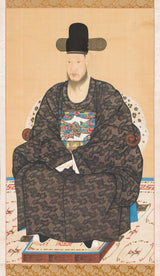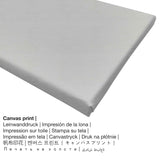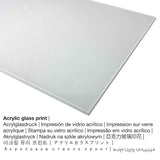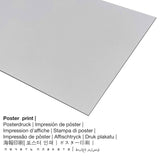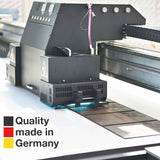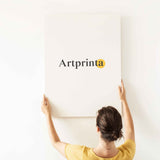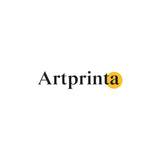Amaghị aha, 1800 - Eserese nke Ọkammụta-official Robe - ọmarịcha nka.
Ụtụ gụnyere. Mbupu gbakọrọ na ndenye ọpụpụ.
What does the website of the Los Angeles County Museum of Art say about this work of art painted by Anonymous? (© Nwebiisinka - nke Los Angeles County Museum of Art - Ebe ngosi nka nke Los Angeles County)
Portraits in East Asia have many functions and many layers of complex meaning. Foremost, they serve a vehicle for the worship and reverence of the ancestors, and this was especially true during the Joseon dynasty, when Confucianism was sponsored by the state. In addition to portraits of scholar-officials, which are the most common, many portraits of Buddhist monks have survived and – in some rare cases – portraits of important women. Images of the king and royal family, created by court painters who specialized only portrait making, were particularly significant. These royal portraits – as well as court-sponsored portraits of scholar-officials who had distinguished careers – were often used as strategic political propaganda to express the power of the court and to reinforce loyalty among the scholar-official class. Commemorative types of portraiture were also created to record the accomplishments of the esteemed statesmen as well as to educate younger generations of officials.[1] In addition, portraits of scholar-officials were made for more private contexts, such as the family shrine. This portrait by an unknown artist depicts an unidentified scholar-official. Seated in a chair in full-length view, the subject wears an official’s robe, a black silk hat, and leather shoes. His robe features a rank badge (det. 1) with two cranes, indicating his status as a civil officer. At first, many scholar-official portraits were made to commemorate meritorious service, and they were displayed in designated halls. By the eighteenth century, however, it became popular among scholars, especially those who had once served as officials, to commission a formal portrait for private use. LACMA’s portrait is characteristic of nineteenth-century portraiture style.[2] At the beginning of the nineteenth century, a traditional Korean mat began to appear as the most common flooring, replacing the previous standard of a foreign carpet ground. It was also during the nineteenth century that a footstool was added – often covered with the same mat flooring – as exemplified in LACMA’s portrait. Other details typical of the nineteenth century include the tall proportion and stiff appearance of the official’s hat. The scholar’s personality and physiognomy are expressed in the finely detailed and skillfully painted face (det. 2). The beard and robe are well executed with great sensitivity, enabling the viewer to appreciate the rich textures. The overall composition and technical details are very similar to the eighteenth-century portrait of Ming Baeksang in Seoul National University Art Museum (fig. 1). Because it possesses so many details characteristic of the genre during the nineteenth century, this portrait can be considered a typical example of nineteenth-century scholar-official portraiture. Footnotes [1] For more on the development of official portraiture, refer to Cho Seonmi, “Joseon Dynasty Portraits of Meritorious Subjects: Style and Social Function,” Korea Journal (summer 2005), 151-81.
Data ndabere na ọrụ nka pụrụ iche
| Aha ọrụ nka: | "Portrait of Scholar-official Robe" |
| Nhazi nka: | sere |
| Otu sara mbara: | nkà nke oge a |
| Century: | 19th narị afọ |
| Afọ nka: | 1800 |
| Afọ nka: | ihe karịrị afọ 220 |
| Nha izizi nka: | 53 x 30 5/8 na (134,62 x 77,79 cm) |
| Ụlọ ihe ngosi nka / ebe: | Ebe ngosi nka nke Los Angeles County |
| Ebe ebe ngosi nka: | Los Angeles, California, Njikota Obodo Amerika |
| Weebụsaịtị nke ihe ngosi nka: | Ebe ngosi nka nke Los Angeles County |
| Licensedị ikike: | ngalaba ọha |
| Site n'aka: | Ụlọ ihe ngosi nka nke Los Angeles County (www.lacma.org) |
Nkọwa onye nka
| Aha onye nka: | amaonye |
| Ọrụ: | onye na-ese ihe |
| nhazi ọkwa: | omenkà nke oge a |
Ozi ihe ahaziri ahazi
| Nkewa bipụta: | mmepụta nka |
| Mmeputakwa: | dijitalụ mmeputakwa |
| Usoro mmepụta: | Mbipụta UV ozugbo (mbipụta dijitalụ) |
| Ihe ngosi: | emepụtara na Germany |
| Ụdị ngwaahịa: | na mmepụta ihe |
| Ojiji ngwaahịa: | ihe ndozi ụlọ, ụlọ mmepụta nka nka |
| Ndozi onyonyo: | nhazi ihe osise |
| Njikwa oyiyi: | 9: 16 - ogologo: obosara |
| Oke onyonyo pụtara: | ogologo bụ 45% mkpụmkpụ karịa obosara |
| Akwa ngwaahịa dị: | Mbipụta iko acrylic (nwere ezigbo mkpuchi iko), mbipụta ọla (aluminium dibond), mbipụta akwa akwa, mbipụta akwụkwọ mmado (akwụkwọ kwaaji) |
| Kanvas n'elu etiti ihe ndọtị (mbipụta akwa akwa): | 50x90cm - 20x35" |
| Mpempe iko acrylic (nwere ezigbo mkpuchi iko) nha dị iche iche: | 50x90cm - 20x35" |
| Nhọrọ nke mbipụta akwụkwọ mmado (akwụkwọ kwaaji): | 50x90cm - 20x35" |
| Ụdị mbipụta aluminom dibond: | 50x90cm - 20x35" |
| Nhazi mbipụta nka: | biko mara na ngwaahịa a enweghị etiti |
Họrọ ngwa ngwaahịa ịchọrọ
In the product dropdown selection you can select a material and a sizeaccording to your personal preferences. The following sizes and materials are the options we offer you for individualization:
- Aluminom dibond mbipụta (ọla): These are metal prints on aluminium dibond material with an impressive depth effect. The Direct Print on Aluminum Dibond is the perfect start to art prints with aluminum. For our Print On Aluminum Dibond, we print your chosen artwork onto the aluminium composite surface. The bright and white components of the original artpiece shimmer with a silky gloss, however without any glow.
- Mbipụta kwaaji: The UV printed canvas applied on a wood stretcher frame. Canvas Prints have the advantage of being low in weight, which implies that it is quite simple to hang your Canvas print without any wall-mounts. Because of thata canvas print is suitable for all types of walls.
- Mbipụta akwụkwọ mmado (ihe kwaaji): The Artprinta poster is a printed flat canvas with a slightly roughened texture on the surface, which resembles the original artwork. Please keep in mind, that depending on the absolute size of the poster print we add a white margin between 2 - 6cm around the print, which facilitates the framing.
- Mbipụta iko acrylic (nke nwere ezigbo mkpuchi iko): The print on acrylic glass, often described as a print on plexiglass, will change the original artwork into wonderful home decoration. What is more, the acrylic art print is a viable alternative option to dibond and canvas fine art replicas. The artwork is made with modern UV print machines.
Nke a kariri 220 ọrụ nka afọ Portrait of Scholar-official Robe was created by the painter Anonymous. The original was made with the size: 53 x 30 5/8 in (134,62 x 77,79 cm). This artpiece is included in the Ụlọ ihe ngosi nka nke Los Angeles County digital art collection, which is the largest art museum in the western United States, with a collection of more than 142.000 objects that illuminate 6.000 years of artistic expression across the globe. With courtesy of: Los Angeles County Museum of Art (www.lacma.org) (licensed: public domain).: . Besides, the alignment of the digital reproduction is Eserese na a akụkụ ruru nke 9: 16, nke pụtara na ogologo bụ 45% mkpụmkpụ karịa obosara.
Ederede iwu: We try everythig possible to depict our products as clearly as possible and to display them visually. Nevertheless, the tone of the print products, as well as the printing can differ somehwat from the presentation on the screen. Depending on your screen settings and the condition of the surface, not all colors can be printed 100% realistically. In view of the fact that all our art reproductions are processed and printed by hand, there may also be minor deviations in the motif's exact position and the size.
© Nchekwa ikike nwebisiinka - Artprinta (www.artprinta.com)

